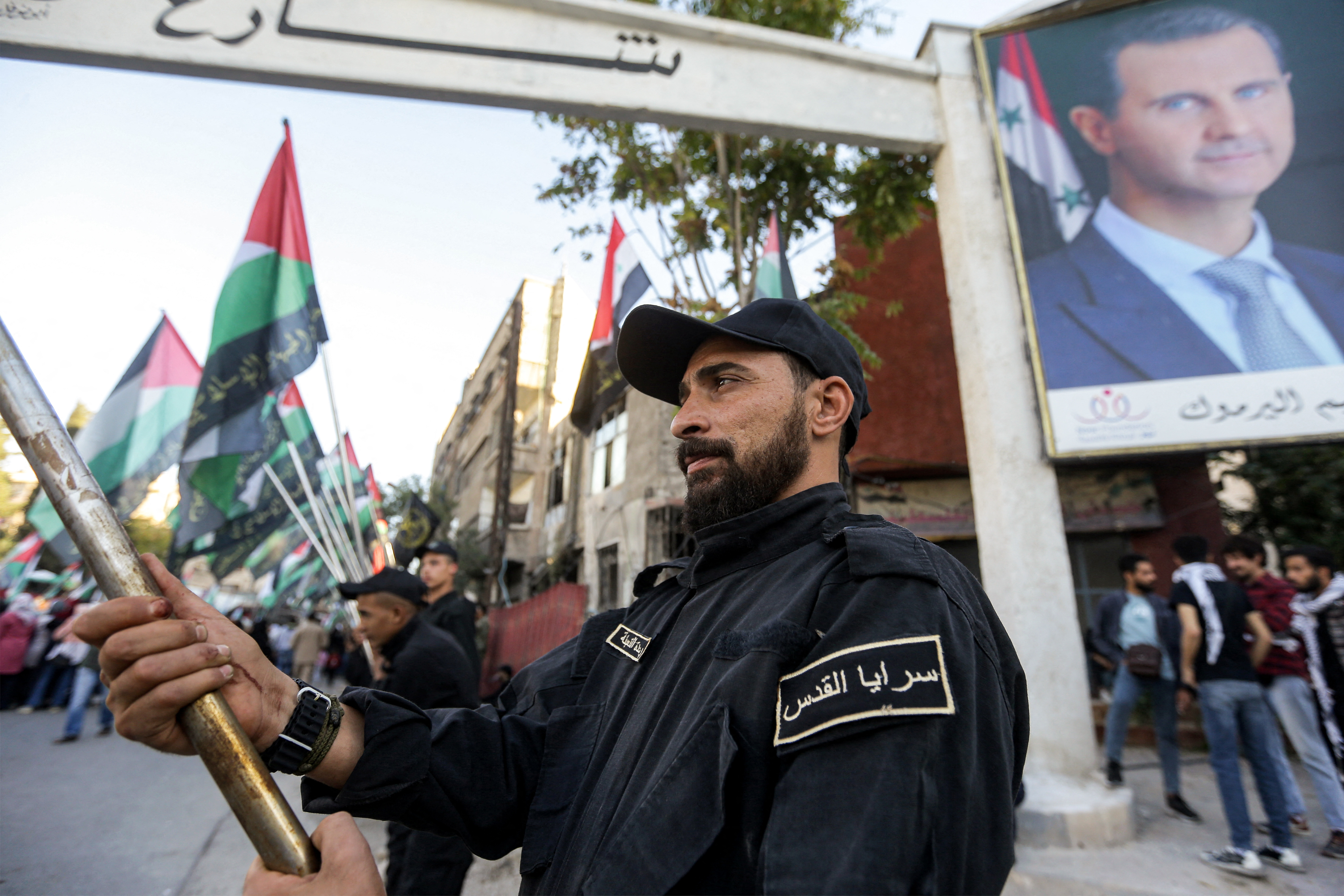Fallout from Hamas’ October 7 attack on Israel continues to spread, with violence in the West Bank and southern Lebanon adding to the tinder box already lit in Gaza. Now, a fourth front in Israel’s war is at risk of igniting in Syria.
The Syrian regime doesn’t have the resources, or the desire, to attack Israel head on. But the presence of multiple Iranian-backed forces inside the country, including Hezbollah and the Iraqi popular mobilization militias, opens the door for others to strike on its behalf. This likelihood will only increase as hostilities on the other fronts continue to escalate.
So far, the Syrian government’s official response to Israel’s retaliatory strikes on Gaza has been statements of condemnation and to work with regional and international stakeholders to deescalate the situation. And yet, Syria’s frontlines with Israel have been busy.
On October 10, mortar rounds were launched from Syria toward the Golan Heights, which has been under Israeli occupation since 1967. Israel responded with artillery fire into Syria. Two days later, Israel conducted simultaneous strikes on airports in Damascus and Aleppo, rendering both inoperable.
Sources suggest that in addition to disrupting Iranian weapons supply routes, Israel’s operations, which coincided with the planned visit of an Iranian foreign official to Syria, may have been a warning to Iran to avoid using its proxies to strike Israeli territory.
But if that was the intent, the message wasn’t received. Another missile attack, launched from Syria on October 14, provoked a second Israeli missile barrage on Aleppo’s airport just as it had resumed operations.
No group has claimed responsibility for the strikes on Israel, and they’ve received no mention by the Syrian state news agency. Nevertheless, sources indicate that both attacks were carried out by a Palestinian group affiliated with Hezbollah.
Given the limited scope of these operations, it’s likely they were designed more as political statements than efforts to cripple Israeli capabilities. While the Syrian regime may be reluctant to engage directly with Israel, Iran’s proxies can strike at any time. This message is significant: in areas where non-Syrian militias operate, it is Tehran – not Damascus – that calls the shots.
Another objective may be to keep Israeli forces stationed along the Syrian border occupied and unable to engage in Gaza. To that end, the frequency of these attacks may increase as the fighting in Gaza intensifies. Limited strikes also give Iran and its proxies a means to back the Palestinian resistance without becoming entangled in a wider conflict.
Limited strikes won’t necessarily stay contained to targeting Israel. Iraqi Popular Mobilization Forces, among other Iranian-backed militias, have recently threatened to target American assets in the region, including bases inside Syria, if the US intervenes in the Hamas-Israel war, or if Israel expands the battleground.
For its part, Israel wants to demonstrate its readiness to engage on multiple fronts and to respond beyond its borders if provoked. By firing on targets inside Syria, Israel seeks to remind Iran that the ongoing conflict in Gaza hasn’t hampered its ability to disrupt the movements of Tehran’s militias.
How far both sides will go to deliver these messages is unclear. At the moment, reciprocal targeting remains the most probable scenario. The ongoing back-and-forth between Israel and Hezbollah has, for the most part, adhered to unwritten rules of engagement between the two parties.
Still, a larger military confrontation with fighters in Syria isn’t an impossibility. If violence were to spread, it would likely be prompted by Israeli escalations against Hezbollah in Lebanon. With both Hezbollah and Israel emphasizing retaliation for every attack and signaling their readiness to push the boundaries, the risk of unintended consequences grows.
The likelihood of a wider military contagion increases with time, driven by a drawn-out Israel-Gaza conflict, the potential collapse of Hamas as a fighting force, and the rising number of Palestinian casualties. It’s not impossible to imagine a scenario where war spirals to other fronts, from Syria into Iraq and as far afield as Yemen.
After more than a decade of its own civil war, Syria again finds itself at the crossroads of a potentially explosive crisis – a regional war that Iran is fueling. While the Syrian people’s support for Palestine remains unshaken, being used as pawns in the conflicts of others isn’t how they would choose to express their solidarity.
Dr. Haid Haid is a Syrian columnist and a consulting associate fellow of Chatham House’s Middle East and North Africa program. X: @HaidHaid22

